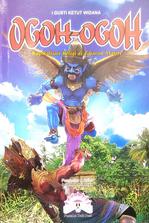Ogoh-Ogoh: Kapitalisasi Religi di Tataran Materi
- Title
- Ogoh-Ogoh: Kapitalisasi Religi di Tataran Materi
- Original language
- Indonesian
- Author(s)
- Illustrator(s)
- Publisher
- Pustaka Bali Post
- ISBN
- 978-602-8953-53-5
- Publication date
- 2016
- Subjects
- Ogoh-ogoh
- Nyepi
- upacara
- Tradisi
- Bali
- Find Book
- https://www.google.com/search?q=buku+Ogoh-Ogoh:+Kapitalisasi+Religi+di+Tataran+Materi&sxsrf=AJOqlzVdSwBoHHG8mKWravm2naVkjrR4Lg:1672982722032&source=lnms&tbm=isch&sa=X&ved=2ahUKEwiwuvKmmrL8AhUQUGwGHcJ3ANwQ_AUoAnoECAEQBA&biw=1366&bih=600&dpr=1#imgrc=bsghcoNPHJfRYM
- Related Env. Initiatives
- Related Places
- Related Biographies
- Related Children's Books
- Related Holidays
- Related Folktales
- Related Comics
- Related Lontar
- Linked words
Description(s)
This book contains information regarding the relationship between the ogoh-ogoh and the holy day of Nyepi in Bali. The appearance of the ogoh-ogoh, which is estimated to have existed around the 1980s, is still able to exist today. The ogoh-ogoh are paraded during the pangrupukan ceremony, which is part of the Nyepi holy day. The appearance of the ogoh-ogoh gives its own characteristics to the implementation of the Nyepi holy day in Bali. However, at the material level, the appearance of the ogoh-ogoh is often seen as a form of carrying out a ceremony to fulfill material needs. Furthermore, the appearance of ogoh-ogoh during the Nyepi holy days is considered religious behavior that is dependent on the element of funding (material) by imposing religious elements.







Enable comment auto-refresher